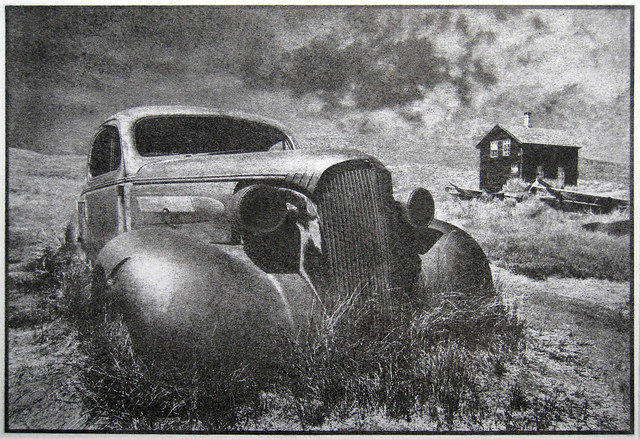In the late 1800s, a group of photographers, who eventually became known as Pictorialists, sought to differentiate their artistic work from amateurs' snapshots. They altered their images by hand scratching the negatives and using brushes to soften and blur parts of the photographs during the printing process. The Pictorialists' main concern was not their subjects but, rather, to ensure photography was a viable art form.
 |
| 'Fading Away'' by Henry Peach Robinson is a composition of five negatives, in which he shows a young girl dying of tuberculosis surrounded by her family. |
By this time, the novelty of capturing images was beginning to fade, and many were now questioning whether the camera was in fact extremely accurate and detailed. This, in addition with the fact that painting enjoyed a much higher status than this new mechanical process, cause some photographers to look for new techniques that, as they saw it, could make photography more of an art form.
 |
| ''Atlanta'' 1896 By Henry Peach Robinson |
The term Pictorialism is used to describe photographs in which the actual scene shown, is of less importance than the artistic quality of the image. For Pictorialists the aesthetics and, the emotional impact of the image, was much more important than what was in front of the camera.
 |
| ''Little Red Riding Hood'' Henry Peach Robinson |
The Techniques:

 Cyanotype: One of the earliest photographic processes, cyanotypes experienced a brief renewal when pictorialists experimented with their deep blue color tones. The color came from coating paper with light-sensitive iron salts.
Cyanotype: One of the earliest photographic processes, cyanotypes experienced a brief renewal when pictorialists experimented with their deep blue color tones. The color came from coating paper with light-sensitive iron salts. Gum bichromate: One of the pictorialists' favorites, these prints were made by applying gum Arabic, potassium bichromate and one or more artist's colored pigments to paper. This sensitized solution slowly hardens where light strikes it, and these areas remain pliable for several hours. The photographer had a great deal of control by varying the mixture of the solution, allowing a shorter or longer exposure and by brushing or rubbing the pigmented areas after exposure.
Oil print: Made by applying greasy inks to paper coated with a solution of gum bichromate and gelatin. When exposed though a negative, the gum-gelatin hardens where light strikes it while unexposed areas remain soft. Artist's inks are then applied by brush, and the inks adhere only to the hardened areas. Through this process a photographer can manipulate the lighter areas of a gum print while the darker areas remain stable. An oil print cannot be enlarged since it has to be in direct contact with the negative.
Platinum print: Platinum prints require a two-steps process. First, paper is sensitized with iron salts and exposed in contact with a negative until a faint image is formed. Then the paper is chemically developed in a process that replaces the iron salts with platinum. This produces an image with a very wide range of tones, each intensely realized.




.jpeg)





No comments:
Post a Comment